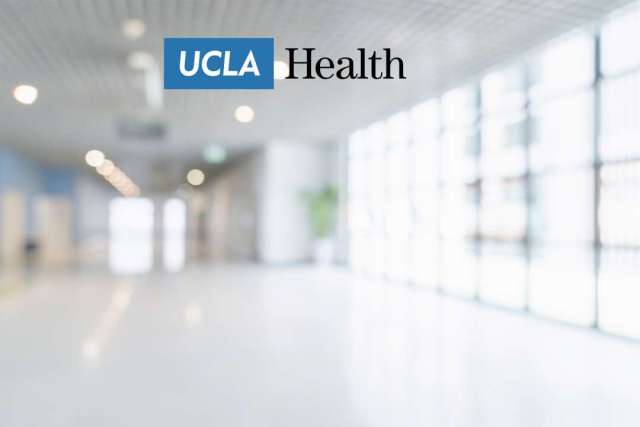More than a quarter of ischemic stroke patients with documented symptom start time arrived at Get With The Guidelines®-Stroke hospitals within the first hour of stroke onset - allowing the opportunity for quicker treatment with clot-busting drugs that can reduce stroke damage, according to a study in Stroke: Journal of the American Heart Association.
"The 'golden hour' refers to the first 60 minutes after stroke onset, when there is the greatest chance to restore blood flow and save threatened tissue," said Dr. Jeffrey L. Saver, study lead author and professor of neurology at the UCLA Stroke Center. "With this study, we have characterized, for the first time, the frequency with which acute stroke patients present in this first hour, when the opportunity to save threatened brain tissue by reperfusion is greatest."
He said people who arrive within the first hour are more likely to receive tissue plasminogen activator (tPA) - a clot-busting drug that's the only proven treatment for acute ischemic stroke - than are those who arrive between one and three hours after onset.
Researchers studied data on 106,924 acute ischemic stroke patients with a known stroke onset time presenting to 905 hospitals participating in the American Heart Association/American Stroke Association's Get With The Guidelines-Stroke quality improvement program between April 2003 and December 2007.
Besides determining how often patients reached the hospital within the first hour, researchers identified features that distinguish "golden hour" patients from patients who present later. They also examined the treatments those patients receive.
The researchers, who presented preliminary study findings at the International Stroke Conference 2009, found that:
- 28.3 percent of patients arrived in less than 60 minutes from stroke onset.
- 31.7 percent arrived between one to three hours after stroke onset.
- 40.1 percent arrived more than three hours after stroke onset.
People arriving within the "golden hour" tended to have more severe stroke deficits and more frequently arrived by ambulances than those arriving later. Once they got to the hospital, these patients more frequently received tPA.
More than one in four patients arriving in the "golden hour" were treated with tPA, compared with only one in eight patients arriving one to three hours after onset and virtually no patients arriving later, Saver said.
However, hospitals did not treat early arriving patients as promptly as would be ideal, the researchers said.
"The national guideline goal is to treat patients with intravenous tPA within 60 minutes of their arriving at the emergency department, also called 'door-to-needle' time," Saver added. "Only about one in five of the 'golden hour' patients were treated within this target timeframe."
He said patients and families should know the warning signs of a possible acute stroke and to call 9-1-1 immediately if any of these symptoms appear:
- sudden weakness on one side of the body
- sudden loss of vision
- sudden speech problems
- sudden severe dizziness
- sudden severe headache
Furthermore, nurses and physicians must be prepared when patients arrive, in part by setting up stroke teams that can respond to acute stroke patients rapidly and reliably, Saver said.
"Results of the study confirm that stroke providers need to do more to ensure rapid delivery of intravenous tPA to all eligible patients - especially those arriving in the first hour of their stroke symptoms when the benefits of early treatment are even greater," said Dr. Lee H. Schwamm, study co-author, chair of the Get With The Guidelines National Steering Committee and professor of neurology at Harvard Medical School in Boston. "Based on this data, we at the AHA/ASA recognized that we needed to do more to help hospitals shorten their door-to-needle times."
Dr. Ralph L. Sacco, president-elect of the American Heart Association, said quality improvement efforts such as Get With The Guidelines merge the best science with how providers treat stroke in the community.
"They are the cornerstone of how we are making huge strides in the way we research, diagnose and treat stroke," said Sacco, professor and chairman of the department of neurology at Miller School of Medicine at the University of Miami in Florida. "But we're only just beginning to improve stroke care at the nation's hospitals."
He said the next-step quality performance initiative by the American Heart Association/ American Stroke Association is the newly launched Target: Stroke quality improvement program, which will equip providers with tools and strategies to improve the time and rate in which patients get life-saving drugs.
"This is a highly focused initiative with an explicit goal of doubling the percentage of acute stroke patients who receive their tPA with a door-to-needle time of less than 60 minutes," Sacco said. "It can make a difference in markedly improving outcomes for our patients."
Additional co-authors are Dr. Eric E. Smith; Dr. Gregg C. Fonarow; Mathew J. Reeves; Xin Zhao; and DaiWai M. Olson. Author disclosures are on the manuscript.
The UCLA Stroke Center is recognized as one of the world's leading centers for the management of cerebral vascular disease. The center treats simple and complex vascular disorders by incorporating recent developments in emergency medicine, stroke neurology, microneurosurgery, interventional neuroradiology, stereotactic radiology, neurointensive care, neuroanesthesiology and rehabilitation neurology. UCLA's stroke program is unique in its ability to integrate clinical and research activities across multiple disciplines and departments. Founded in 1994, the UCLA Stroke Center is designated as a certified Primary Stroke Center by the national Joint Commission on Accreditation of Healthcare Organizations.



